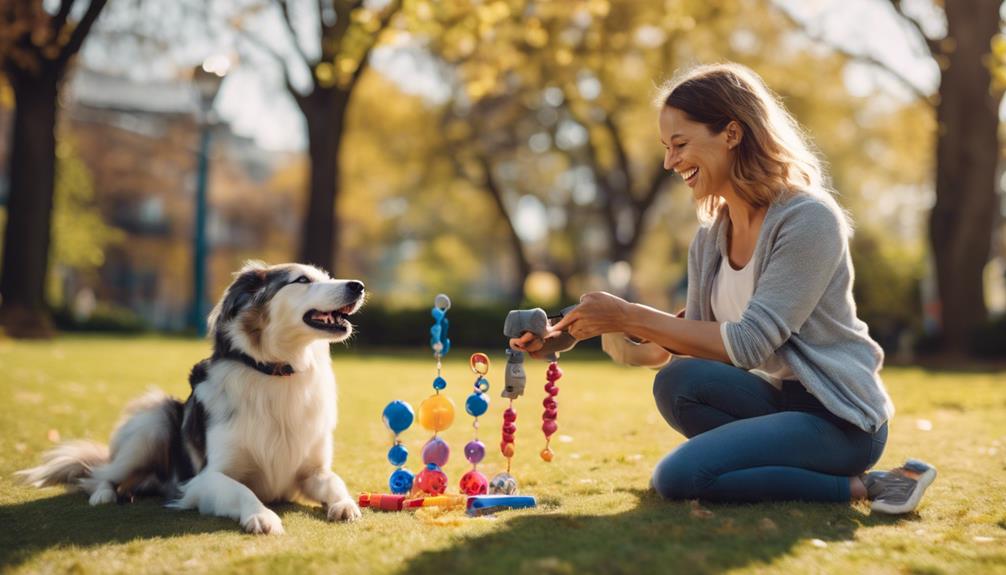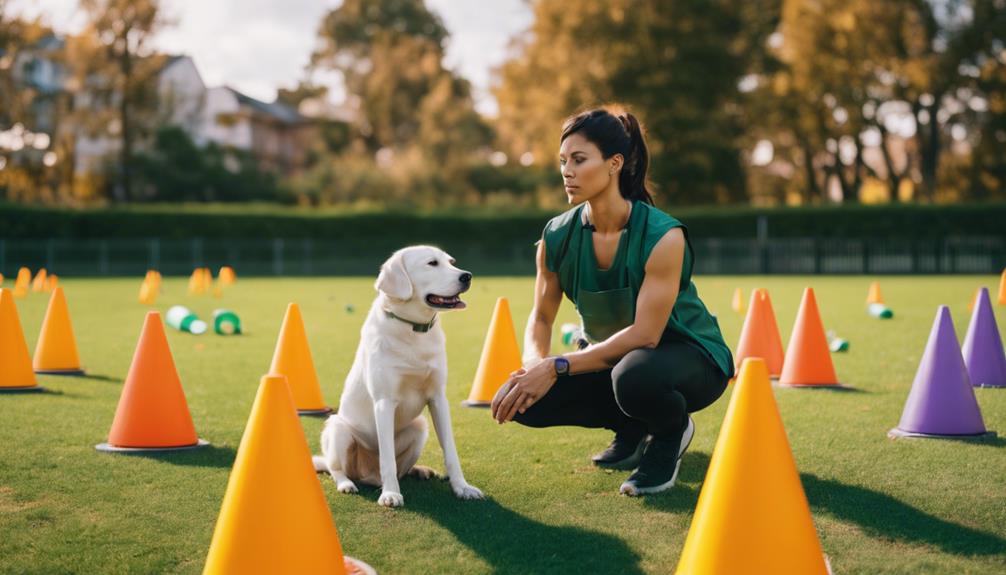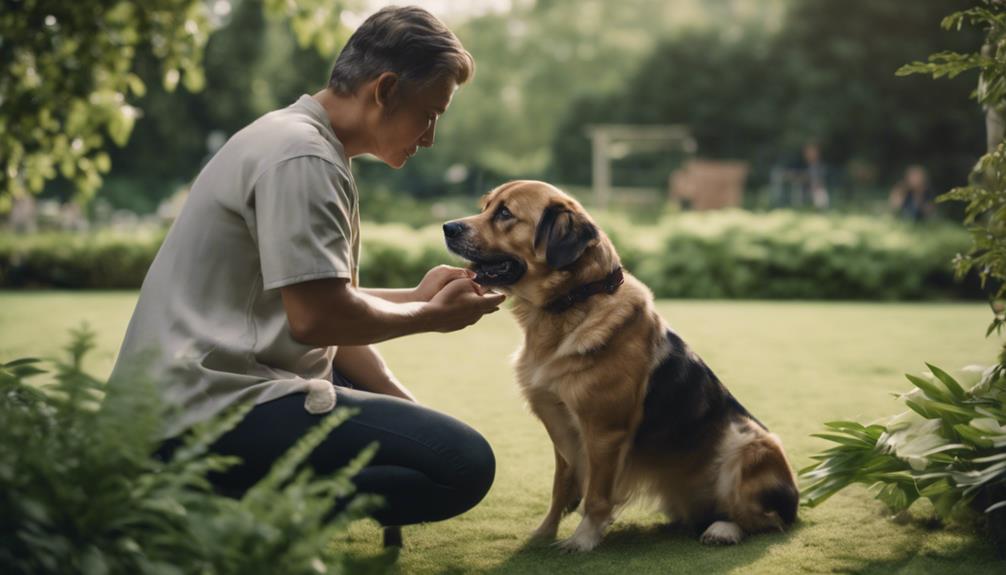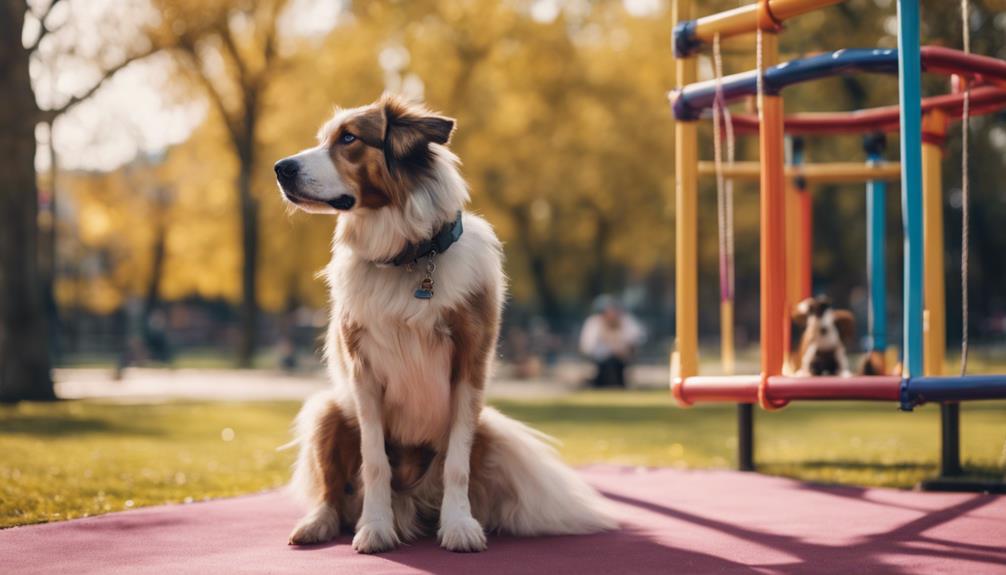Training a stubborn dog can often present unique challenges that require a strategic approach tailored to the individual temperament of your pet. By understanding the nuances of your dog's behavior and employing techniques such as positive reinforcement and consistent routines, you can foster a more effective training environment. However, the journey to mastering stubbornness involves more than just basic commands; it requires a commitment to patience and adaptability. As we explore specific strategies that can yield remarkable results, consider how each method aligns with your dog's personality and needs.
Understand Corgi Temperament

Corgis possess a unique temperament characterized by intelligence, loyalty, and a strong herding instinct, making them both delightful companions and challenging trainees. Understanding the breed characteristics is vital for successful training.
Corgis are known for their playful nature and strong attachment to their families. However, their herding background can lead to some corgi quirks, such as nipping at heels or trying to herd children and other pets. These behaviors stem from their instinct to gather and control.
Additionally, they are quick learners but can also be stubborn, requiring patience during training. Recognizing these traits allows owners to tailor their training methods, ensuring a positive experience for both the dog and owner.
Emphasizing consistency and encouragement will foster a strong bond.
Consistency Is Key
To effectively train a Corgi, maintaining consistency in commands, cues, and rewards is vital for reinforcing desired behaviors and shaping a well-mannered pet.
Establishing a training schedule helps ensure that training sessions occur regularly, which fosters a sense of routine for your dog. Consistency in the use of specific commands, such as “sit” or “stay,” will help your Corgi understand what is expected.
Additionally, behavior tracking is important; keeping a record of your dog's responses can identify progress and areas needing improvement. This practice allows you to adjust your training methods if necessary.
Positive Reinforcement Techniques

Utilizing positive reinforcement techniques is essential for encouraging desired behaviors in dogs, as it fosters a trusting relationship between the pet and the owner.
One effective method is clicker training, which involves using a small device that makes a clicking sound to mark the exact moment a dog performs the desired behavior. This sound is then immediately followed by a reward, reinforcing the action.
Reward systems can include treats, praise, or playtime, allowing dogs to associate good behavior with positive outcomes.
Consistency is key; using these techniques regularly helps dogs learn effectively.
Short, Engaging Training Sessions
When training your dog, it is essential to keep sessions short and engaging to maintain their interest and focus.
Brief training periods, typically lasting 5 to 10 minutes, allow for more effective learning while reducing the chance of frustration for both you and your pet.
Incorporating positive reinforcement during these sessions, such as treats or praise, will encourage your dog to respond eagerly and reinforce desired behaviors.
Keep Sessions Brief
Short and engaging training sessions are essential for maintaining your dog's focus and enthusiasm, ensuring effective learning outcomes.
Brief training sessions, lasting around 5 to 10 minutes, are ideal for teaching new commands or behaviors. This duration allows your dog to absorb information without becoming bored or frustrated.
Incorporating session breaks is crucial; these pauses help your dog process what they have learned and prevent fatigue. During breaks, offer praise or a quick playtime to keep the experience positive.
Remember, consistency is key. Regularly scheduled brief training sessions can yield better results than infrequent, lengthy practices.
Ultimately, keeping sessions brief fosters a productive and enjoyable learning environment for both you and your stubborn canine companion.
Use Positive Reinforcement
Positive reinforcement is a highly effective training technique that encourages desirable behaviors in dogs by rewarding them with treats, praise, or playtime. This method not only strengthens the bond between you and your dog but also makes training sessions enjoyable.
Incorporating clicker training into your routine can enhance the effectiveness of your reward systems.
Here are some tips for using positive reinforcement effectively:
- Keep training sessions short, ideally 5-10 minutes.
- Use high-value treats that your dog loves.
- Be consistent with your rewards; always reward immediately after the desired behavior.
Incorporate Play Into Training

Incorporating play into training sessions can significantly enhance your dog's learning experience and reinforce desired behaviors. By using playful rewards, you can motivate your dog while making training enjoyable. For example, after your dog successfully follows a command, reward them with a quick game of tug-of-war or fetch. This not only solidifies their understanding but also associates training with fun.
Interactive toys can also be beneficial during sessions. These toys engage your dog's mind and can be used as a reward for good behavior.
To summarize, integrating play into training fosters a positive atmosphere and strengthens the bond between you and your dog. Remember, a happy dog is a more receptive learner!
Use High-Value Treats
Using high-value treats can significantly enhance your dog training sessions.
Selecting the right treats that are especially appealing to your dog is crucial, as is timing their delivery effectively to reinforce desired behaviors.
Additionally, adjusting the treats based on your dog's training progress can help maintain motivation and ensure successful learning outcomes.
Choosing the Right Treats
Selecting high-value treats is essential for effective dog training, as they serve to motivate and reward your pet during the learning process. High-value treats can vary based on treat types and flavor preferences, making it important to choose wisely.
Consider the following options when selecting treats for your dog:
- Soft treats: Easy to chew and digest, ideal for quick rewards.
- Meat-based treats: Highly appealing due to their strong aroma and flavor.
- Cheese or peanut butter: Many dogs adore these flavors, making them irresistible.
Timing Treats Effectively
Effective timing in delivering high-value treats is crucial for reinforcing desired behaviors during dog training sessions. Proper treat timing helps your dog make a clear connection between the action and the reward. To achieve this, it's essential to deliver the treat immediately after your dog performs the desired behavior. This timing ensures they understand what they are being rewarded for.
Additionally, treat placement can enhance your training effectiveness. Holding the treat close to your dog's nose can help focus their attention. Furthermore, using a variety of high-value treats can keep your dog engaged and motivated.
Treats for Training Progress
High-value treats are essential in fostering motivation and enthusiasm during dog training sessions, ensuring that your dog remains engaged and eager to learn. Utilizing a variety of treats can keep your dog interested and excited about training.
Here are some tips for selecting and storing treats:
- Choose high-quality, flavorful options: Consider meats, cheeses, or special dog treats.
- Maintain treat variety: Rotate different options to prevent boredom.
- Store treats properly: Keep them in airtight containers to maintain freshness.
Set Clear Boundaries

Establishing clear boundaries is crucial for fostering a harmonious relationship between you and your dog, ensuring they understand acceptable behaviors and expectations within your home.
Boundary setting helps your dog learn where they can go, what they can chew, and when it's appropriate to bark. Begin by defining specific areas of the house where your dog is allowed or restricted. Consistency is key; reinforce these boundaries with positive reinforcement when your dog complies.
Behavior expectations should be communicated clearly, as dogs thrive on routine and predictability. For example, if jumping on the couch is not allowed, consistently redirect your dog to their designated spot.
Socialization With Other Dogs
Socialization with other dogs is crucial for your pet's development and overall well-being.
Early socialization can lead to numerous benefits, including improved behavior and reduced anxiety in new situations.
Additionally, employing techniques for positive interactions ensures that your dog learns how to engage safely and confidently with their canine peers.
Benefits of Early Socialization
Early interaction with other dogs is crucial for fostering positive behaviors and reducing anxiety in your pet. Engaging in puppy exposure and group playtime helps your dog develop essential social skills.
The benefits of early socialization include:
- Improved behavioral responses to unfamiliar situations
- Reduced fear and aggression towards other dogs
- Enhanced communication skills through play
Techniques for Positive Interactions
Building on the foundation of early socialization, implementing effective techniques for positive interactions with other dogs can significantly enhance your pet's behavior and overall well-being.
Understanding and responding to body language is crucial. Dogs communicate through their posture, tail position, and facial expressions. Observe these signals to gauge their comfort level. Additionally, vocal cues play a significant role; barking, growling, or whining can indicate various emotions.
To encourage positive interactions, consider the following techniques:
- Introduce dogs in neutral territory to minimize territorial behavior.
- Use treats as rewards for calm interactions.
Patience and Persistence

When training your dog, the virtues of patience and persistence are essential, as mastering new behaviors often requires time and consistent effort.
Understanding dog behavior is crucial, as stubbornness can be a natural trait.
To maintain training motivation, consider the following strategies:
- Set realistic goals: Break down training tasks into manageable steps.
- Use positive reinforcement: Reward your dog with treats or praise for good behavior.
- Stay consistent: Use the same commands and signals to avoid confusion.
Recognize Individual Personality
Understanding that each dog possesses a unique personality is crucial for tailoring training methods that resonate with their individual traits and behaviors.
Recognizing different dog personality types, such as the confident leader, the shy follower, or the playful explorer, allows owners to adapt their training approaches.
Training adaptability is essential; a method that works for one dog may not be effective for another. For instance, a stubborn dog may respond better to positive reinforcement, while a more submissive dog might need gentle encouragement.
Observing your dog's reactions and adjusting your techniques accordingly can improve the training experience.

